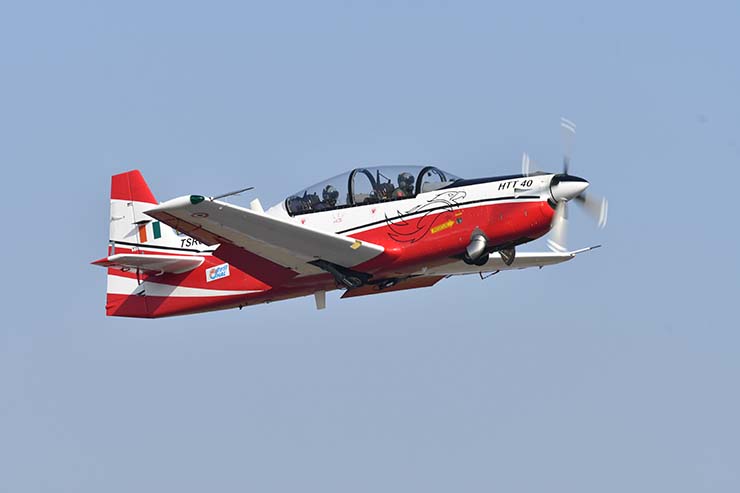
New Delhi: As the indigenously-made HTT-40 basic trainer aircraft is still awaiting the full airworthiness certification from the Centre for Military Airworthiness and Certification (CEMILAC), there may be a possible delay in its planned delivery schedule.
While CEMILAC had accorded provisional airworthiness compliance to HTT-40 with several “critical limitations”, the aircraft will have to obtain complete airworthiness certificate prior to start of production, which at present, HAL is in the process of obtaining, according to sources in the government. The defence ministry signed a contract with the state-owned Hindustan Aeronautics Limited (HAL) in March this year to procure 70 HTT-40 basic trainer aircraft for the Indian Air Force (IAF).
A regulatory body under the Defence Research Development Organisation (DRDO) – CEMILAC is responsible for providing airworthiness certification of all military aircraft, helicopters, Unmanned Aerial Systems (UAS), aero-engines and other air launched weapons thus certifying them for flight safety.
In March 2023, the defence ministry signed a Rs 6,800 crore contract with HAL to procure 70 HTT-40s aimed at filling a critical gap in the availability of aircraft for the initial training of pilots. The HTT-40 has already been certified against FAR 23 (Federal Aviation Regulation).
According to a source in HAL, “The aircraft is yet to be certified against the ASQR (Air Staff Quality Requirements) issued by IAF. The draft “Release to Service Document” is submitted to RCMA (Regional Centre of Military Airworthiness.) This is expected to be cleared by October 2023.”
The HTT 40 is abiding by the timeline, adding that major jigs and fixtures have been ordered by HAL and materials procurement activities are under way, the source said. “All the aircraft will be supplied over a period of six years, say by 2029, though we cannot put the exact time frame for the first and the last deliveries.”
After the HAL-made trainer aircraft HPT-32 was grounded around 2010, the major gap in the availability of adequate trainer aircraft for pilots in IAF became pronounced. As an interim arrangement, the IAF had procured 75 Pilatus PC-7 Mk II planes from Switzerland under a contract signed in 2012 to meet the critical shortfall in pilots’ training, and in the absence of an indigenous basic trainer aircraft at the time, was provided with the option of placing a follow-on order of another 38 aircraft, the requirement for which was cleared by the Defence Acquisition Council.
The induction of the aircraft is set to start September 2025 onwards and will continue till 15 March 2030, a government statement earlier stated. Adding further, it said that the procurement will also include a Full Mission Simulator for the aircraft to supplement the aerial training, allowing pilots to practice different profiles on ground prior to the sorties.
However, concerns have emerged over HTT-40 meeting the promised delivery schedule as it has not received the final certification yet. A delay in getting indigenous basic trainer aircraft was among the factors contributing to the shortfall of pilots in the IAF, according to one official familiar with the developments.
A media report quoting an official stated that the IAF decided on procuring the aircraft to support the indigenous project even when it was yet to be certified and meet many performance parameters in training. The contract for HTT-40 was signed before the aircraft demonstrated entry and safe recovery from inverted spin—a mandatory requirement for undertaking training, the report added.
Stressing on the requirement of the final certification, officials, however, added that HTT-40 will be flown solo by pilots learning to fly for the first time and thus needs to be a “forgiving” aircraft with a “very high degree of safety” built into it.
HTT-40, manufactured by HAL and indigenously designed and developed by its Aircraft Research & Design Centre, is powered by a four bladed turbo-prop engine. As per HAL, the aircraft will be fitted with a state-of-the-art glass cockpit, modern avionics and latest safety features, including a zero-zero ejection seat. It has a maximum speed of 450 kilometres per hour and a maximum service ceiling of six kilometres.









